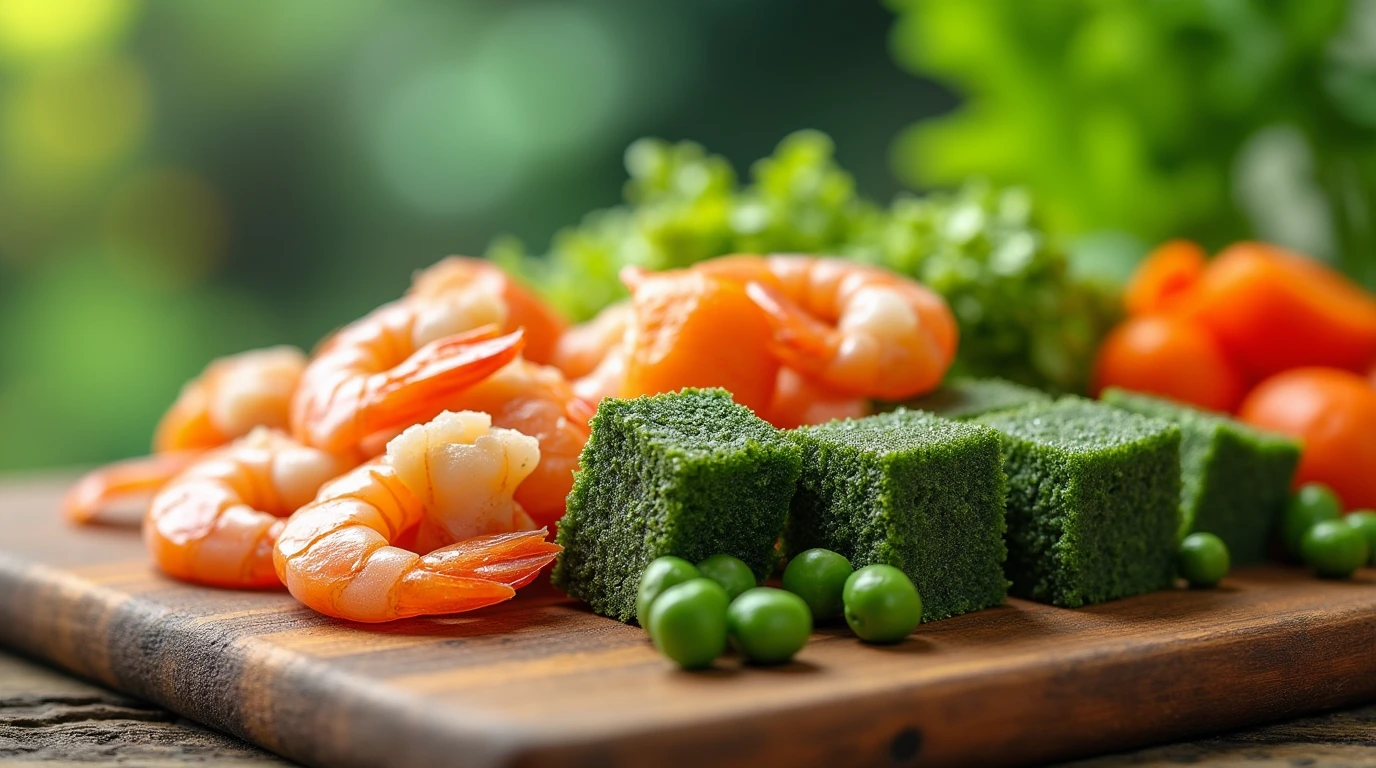Easy Homemade Fish Food Recipe: How to Make Nutritious Fish Food at Home
Introduction: Why Homemade Fish Food?
Have you ever wondered what exactly goes into your fish’s food? If you’re an aquarium enthusiast, you know that nutrition plays a key role in the health and longevity of your fish. Many commercial fish foods contain fillers, artificial preservatives, and unnecessary additives that may not provide the best nutrition for your aquatic pets. That’s where homemade fish food recipe comes in.
By making your own fish food, you control the ingredients, ensuring a well-balanced and nutrient-rich diet tailored to your fish species. Plus, it’s a cost-effective and eco-friendly alternative. In this guide, you’ll discover a simple, nutritious homemade fish food recipe and learn why making your own is a game-changer for your underwater friends.
Table of Contents
Benefits of Making Your Own Fish Food
Healthier Ingredients
- No artificial additives or preservatives
- Higher quality proteins and nutrients
- Fresh, natural sources of vitamins and minerals
Customizable Nutrition
- Tailor ingredients to meet the specific needs of different fish species
- Adjust protein and fat levels based on your fish’s dietary requirements
Cost-Effective
- Saves money in the long run compared to buying premium fish food brands
- Bulk preparation allows for efficient storage and usage
Eco-Friendly
- Reduces plastic waste from commercial fish food packaging
- Allows for sustainable ingredient sourcing
Understanding Nutritional Needs of Fish
Before diving into the recipe, it’s crucial to understand what nutrients fish require for optimal health. Different species have varying dietary needs, but in general, all fish need the following key nutrients:
Proteins (Essential for Growth and Development)
- Sources: Fish meal, shrimp, earthworms, cooked egg yolks
- Importance: Helps with muscle development and overall growth
Fats (Energy and Metabolism Support)
- Sources: Fish oil, krill, flaxseed
- Importance: Provides long-term energy and supports cell function
Carbohydrates (Limited but Useful)
- Sources: Vegetables, grains
- Importance: Should be minimal but can help provide some energy
Vitamins and Minerals (Immune System and Bone Health)
- Sources: Spirulina, seaweed, eggshell powder
- Importance: Strengthens immunity and enhances coloration
Ingredients for a Nutritious DIY Fish Food Recipe
Using a combination of these essential nutrients, here’s a well-balanced homemade fish food recipe:
| Ingredient | Purpose | Examples |
|---|---|---|
| Protein | Muscle growth & development | Fish meal, shrimp, earthworms |
| Fats | Energy & cell function | Fish oil, flaxseed, krill |
| Carbs | Limited digestion support | Vegetables, grains |
| Vitamins/Minerals | Immunity & bone health | Spirulina, seaweed, eggshells |
Step-by-Step Guide to Making Homemade Fish Food
Step 1: Gather Ingredients & Tools
- Fresh protein sources (shrimp, fish meal, or earthworms)
- Vegetables like peas, spinach, and carrots
- Omega-3 sources like fish oil or flaxseeds
- Spirulina powder for extra nutrients
- Blender or food processor
- Ice cube trays or silicone molds for storage
Step 2: Blend the Ingredients
- Combine protein sources, vegetables, and vitamins in a blender.
- Add fish oil or water to achieve the desired consistency.
- Blend until the mixture becomes a smooth paste.
Step 3: Shape & Store the Food
- Pour the blended mixture into ice cube trays or flatten onto a baking sheet.
- Freeze for several hours or until solid.
- Cut into small, bite-sized pieces for feeding.


Feeding Tips & How to Store Homemade Fish Food
Storage
- Store frozen fish food in an airtight container to maintain freshness.
- Use within 2-3 months for best results.
Portioning
- Feed small amounts to prevent overfeeding and water pollution.
- Adjust feeding frequency based on your fish species’ needs.
Feeding Frequency
- Carnivorous fish: Once or twice a day
- Herbivorous fish: Multiple small feedings per day
- Omnivorous fish: Once or twice a day with variety
Alternative Homemade Fish Food Recipes
Vegetarian Fish Food Recipe
- Best for herbivorous fish like goldfish and plecos.
- Ingredients: Spinach, peas, zucchini, spirulina powder.
- Blend and freeze in small portions.
High-Protein Fish Food Recipe
- Best for carnivorous fish like bettas and cichlids.
- Ingredients: Shrimp, fish meal, cooked egg yolks, krill.
- Blend and freeze into small cubes.
Gel-Based Fish Food Recipe
- Ideal for slow eaters or bottom feeders.
- Ingredients: Fish meal, vegetables, gelatin powder.
- Cook gelatin, mix ingredients, and let it set before serving.
Frequently Asked Questions (FAQ)
Is homemade fish food better than store-bought fish food?
Yes! It contains fresher, more nutritious ingredients without artificial preservatives.
How long does homemade fish food last?
Frozen homemade fish food can last 2-3 months when stored properly.
Can I use human food scraps for fish food?
Only certain foods—avoid processed items, salt, and excessive starch.
How often should I feed my fish homemade food?
Most fish need once or twice daily feedings, depending on species.
Conclusion & Call to Action
Making your own fish food is a rewarding and beneficial process that ensures your aquatic pets get the best nutrition possible. With natural, high-quality ingredients, you can enhance their health, longevity, and overall well-being while saving money and reducing waste.
Are you ready to try making homemade fish food? Share your experience in the comments below and let us know how your fish react to this nutritious recipe! Don’t forget to share this guide with fellow aquarium enthusiasts!

